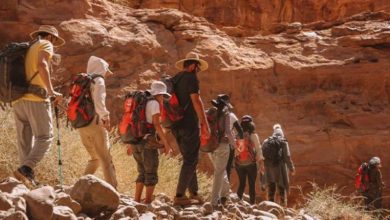Essential Items Needed for Camping: A Complete Guide for Outdoor Success

Camping is one of the best ways to disconnect from the digital world, reconnect with nature, and recharge your spirit. Whether you’re heading to a national park, a beachside campsite, or a hidden forest gem, having the right gear can mean the difference between a peaceful outdoor retreat and a stressful experience. From shelter to safety, cooking to comfort, this guide covers all the essential camping items you need to pack before you head into the wild.
1. Shelter: A Solid Home Away from Home
✔ Tent: Your tent is your main form of shelter, so choose one that’s weather-appropriate, durable, and the right size for your group. Make sure it includes a rainfly for wet conditions and good ventilation for warmer climates.
✔ Ground Tarp or Footprint: This goes under your tent to protect the floor from rocks, moisture, and abrasion. It extends your tent’s lifespan and helps prevent leaks.
✔ Sleeping Bag: Choose a sleeping bag rated for the lowest temperatures you might face. There are summer, three-season, and winter sleeping bags available depending on your location.
✔ Sleeping Pad or Air Mattress: A sleeping pad not only adds comfort but also insulates you from the cold ground. If you prefer more cushion, consider a compact air mattress and a manual pump.
✔ Pillow: Don’t underestimate the value of a good night’s sleep. Bring a camping pillow or pack a small one from home.
2. Cooking & Food Essentials
✔ Portable Stove or Campfire Gear: Depending on regulations and weather, you’ll need a camp stove or grill. Gas-powered stoves are easy to use and efficient. Don’t forget extra fuel canisters.
✔ Cookware & Utensils: Bring lightweight pots, pans, spatulas, and tongs. You’ll also need plates, cups, and cutlery. Consider multi-purpose tools like sporks to save space.
✔ Cooler or Food Storage: Keep perishables cold with a cooler (especially for multi-day trips). For bear country or remote areas, use bear-proof containers or hang your food in trees.
✔ Cleaning Supplies: Pack biodegradable soap, scrubber sponge, trash bags, and a small towel. A collapsible wash basin is also handy for cleanup.
✔ Food and Water: Pack easy-to-cook meals like instant noodles, canned beans, pasta, or freeze-dried meals. Always carry more drinking water than you think you need, or bring a portable water filter or purification tablets if you’ll be refilling from natural sources.
3. Clothing: Comfort Meets Function
✔ Weather-Appropriate Clothing
Layering is key. Include:
- Moisture-wicking base layers
- Insulating mid-layers (like fleece or down)
- Waterproof and windproof outer layer
Even in summer, nights can be cold, so pack thermal gear just in case.
✔ Sturdy Footwear: A good pair of hiking boots or shoes is a must. For around camp, a pair of sandals or slides can give your feet a break.
✔ Accessories: Don’t forget socks, gloves, a hat, sunglasses, and a rain poncho or jacket. Weather can change quickly outdoors.
4. Lighting & Navigation
✔ Headlamp or Flashlight: You’ll need light after dark—whether for late-night hikes, bathroom trips, or finding something in your tent. Headlamps keep your hands free.
✔ Lantern: Great for lighting up your tent or cooking area. Some are solar-powered, while others run on batteries or fuel.
✔ Extra Batteries or Power Bank: Always bring backup batteries and a portable power bank for emergency charging.
✔ Map and Compass or GPS: Even if you’re relying on your phone, offline maps and a compass are important if you lose service. Always have a non-digital backup.
5. Health, Hygiene & Safety
✔ First Aid Kit: Include bandages, antiseptics, tweezers, pain relievers, antihistamines, and any necessary prescription medications.
✔ Insect Repellent & Sunscreen: Protect yourself from mosquitoes, ticks, and UV rays. Consider permethrin-treated clothing or natural repellents if you prefer chemical-free options.
✔ Toiletries: Bring toilet paper, hand sanitizer, a toothbrush and toothpaste, biodegradable soap, and wet wipes. For wilderness sites, bring a trowel to bury waste (if allowed) or a portable toilet.
6. Tools & Extras
✔ Multi-tool or Pocket Knife: Great for cutting food, fixing gear, opening cans, or doing minor repairs.
✔ Duct Tape & Paracord: Fix tears, patch leaks, hang things, or make emergency repairs—these are true camping MVPs.
✔ Fire Starter: Carry waterproof matches, lighters, and fire starters (cotton balls dipped in Vaseline work great!). Always check if campfires are allowed before starting one.
✔ Backpack or Duffel: Keep your gear organized and easy to carry. For hiking-based trips, go with a backpack with support; for car camping, duffels work fine.
✔ Camping Chair or Hammock: Sitting on a log is fun for 5 minutes—then it’s not. A foldable camping chair or a hammock will elevate your experience.
Final Tips: Be Prepared, Not Overpacked
While it’s important to bring the essentials, it’s just as vital not to overpack. Prioritize lightweight, multi-use gear, and always check the weather forecast and regulations of your campsite. A well-packed camping trip brings you closer to nature, reduces stress, and creates unforgettable memories. With these essentials in your backpack or trunk, you’re set for success—whether it’s a weekend getaway or a weeklong wilderness adventure.









